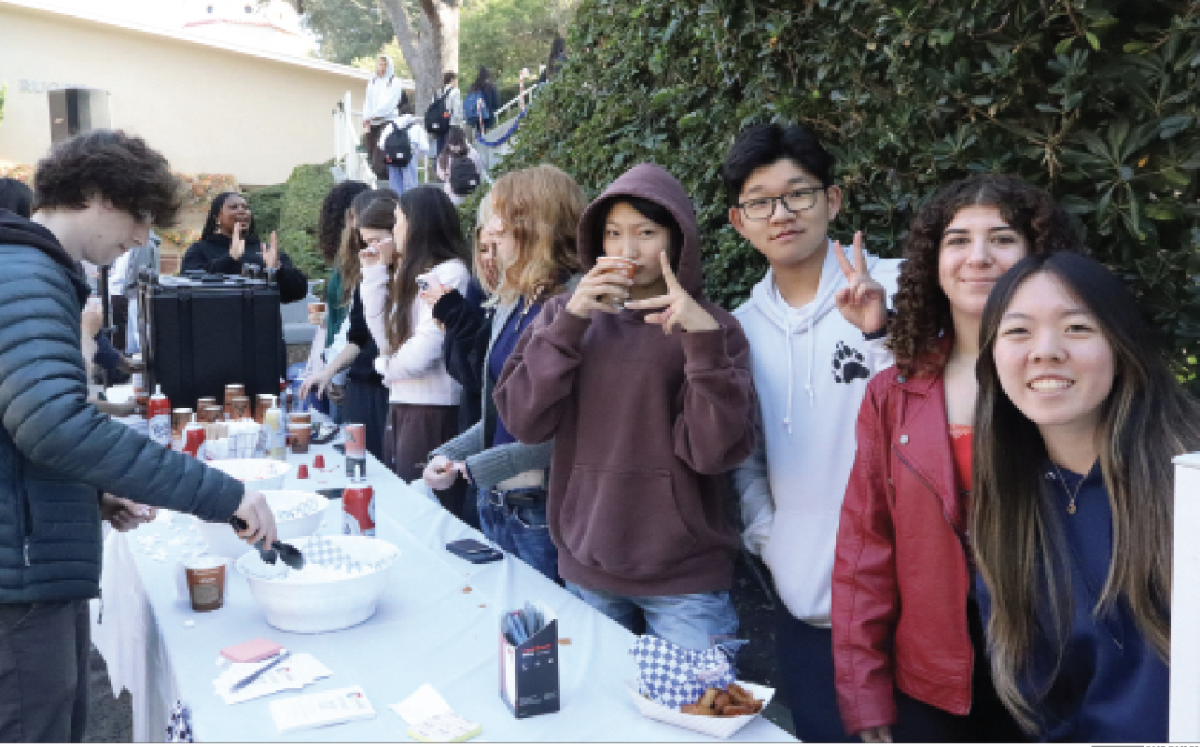By Sammy Roth
The Rocketry Club has been chosen as a national finalist for the Team America Rocketry Challenge. Accompanied by their coach, math teacher Jacob Hazard, nine members of the team will make the trip to Washington D.C. next month for the finals.
Harvard-Westlake was one of 100 teams from across the country which have been invited to the May 17 finals in The Plains, VA. The competition is sponsored by the Department of Defense, NASA and 37 other aerospace and educational organizations.
The goal of the competition is to launch a rocket 750 feet into the air. At some point, the rocket must eject two eggs in a parachute. The eggs must stay in the air for exactly 45 seconds and reach the ground unbroken.
The winning team will be rewarded with an all-expense paid trip to an international air show in Paris. Additionally, $60,000 in cash and scholarships will be divided among the top 10 teams. The top 25 teams will be given the opportunity to participate in the Student Launch Initiative, a rocketry program run by NASA.
Some team members were excited to find out that they will receive partial funding for their trip from the Simonyi Fund, which donates money to scientific, educational and artistic causes.
Ian Cinnamon â10, who founded the inaugural Rocketry Club this year, had emailed the Fundâs creator, Dr. Charles Simonyi, at the beginning of the year to ask for a few hundred dollars to buy rocket motors. Simonyi, the man responsible for the development of Microsoft Word and Microsoft Excel, did not respond at first. But at the end of March, Cinnamon received an e-mail from Susan Hutchinson, the cofounder of the Simonyi Fund, who inquired into how the Rocketry Club was doing.
Cinnamon responded that he would let her know if the team made the finals. After finalists were announced, Cinnamon emailed Hutchinson, explaining that each of the team members going to D.C. would have to pay about $600 to fund the trip. Hutchinson agreed to give the team $3000 to help with their expenses.
âDespite this, the trip is going to be expensive, so we are still looking for sponsors,â Cinnamon said.
Cinnamon designed the rocket, with the rest of the team working to build and launch it. A teamâs score is calculated as the absolute value of the difference between the actual launch height and 750 feet, added to two times the absolute value of the difference between the time the eggs stay in the air and 45 seconds. Broken eggs warrant disqualification.
The team chose to try to qualify for finals on March 1, their seventh launch of the year. That day the rocket, launched by Brett Thompson â10, attained an altitude of 758 feet, with the eggs staying in the air for 45.25 seconds for a score of 8.5. Last yearâs qualifying score for finals was 21, which, Thompson says, means the team is in good shape for the finals.
âI think we have a really good chance [of winning] with the score we got,â he said. âWeâre shooting for the top 10 at least if we donât get number one. And I know we can do that.â
Last yearâs winning score was 1.86.
âYou try to keep as many variables constant as possible, and thatâs the best thing you can do,â Thompson said.
Like Thompson and numerous others, Andrew Wang â10 discovered the club at the Activities Fair earlier this year.
âThe Rocketry Club has been a great experience for all of us,â Wang said. âWe all may seem different, but we are unified by our love for rocketry.â




























